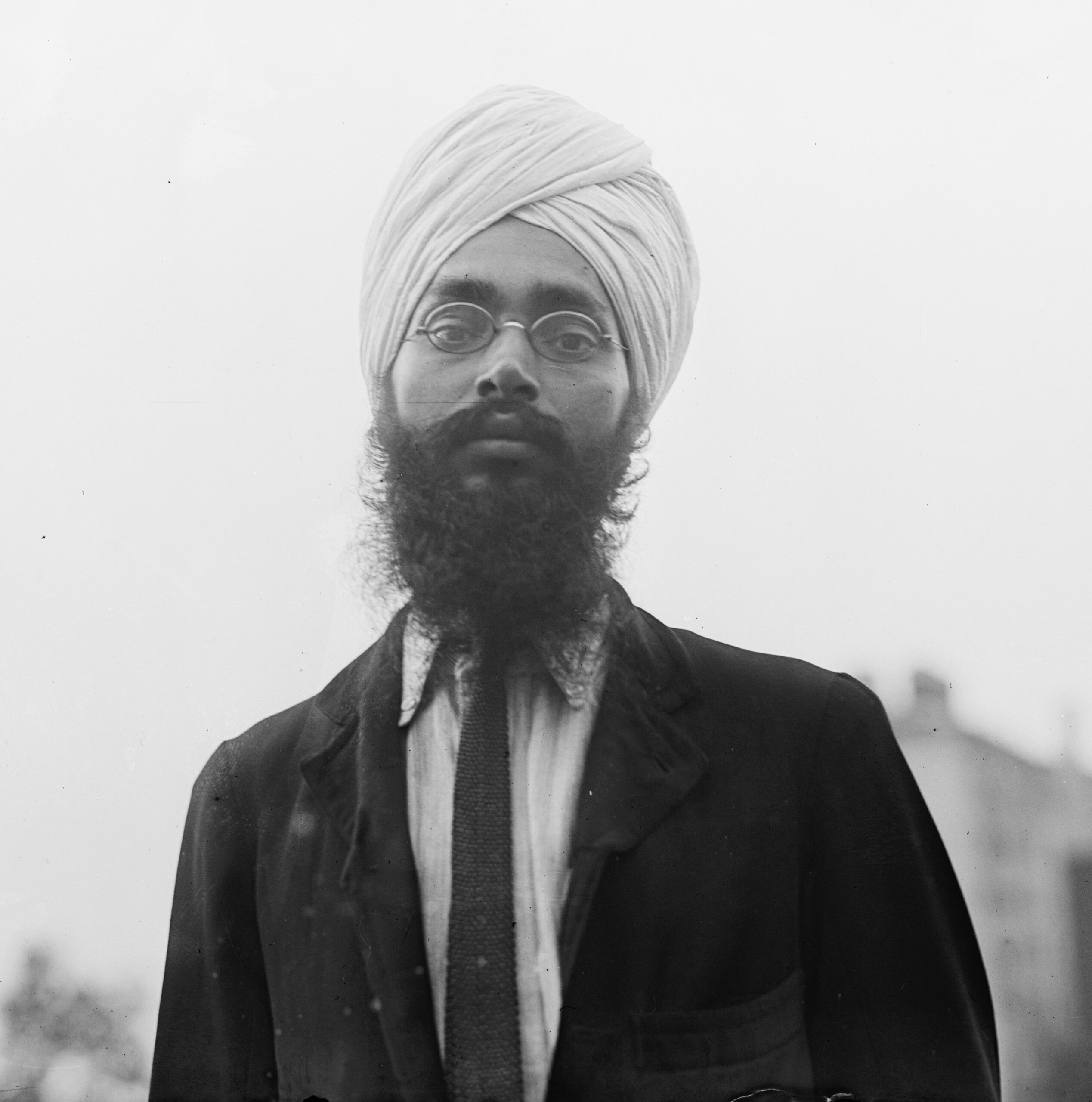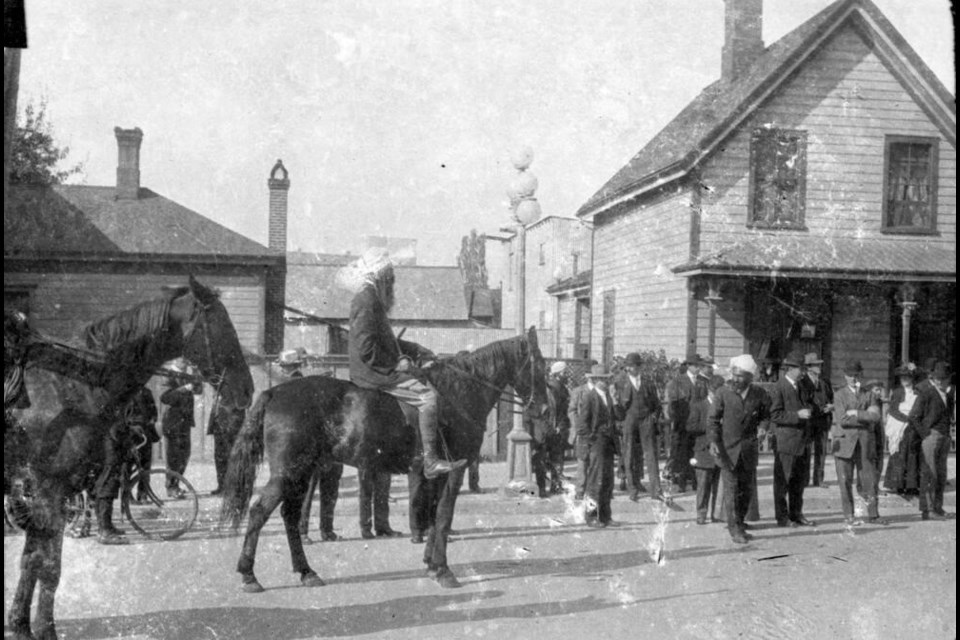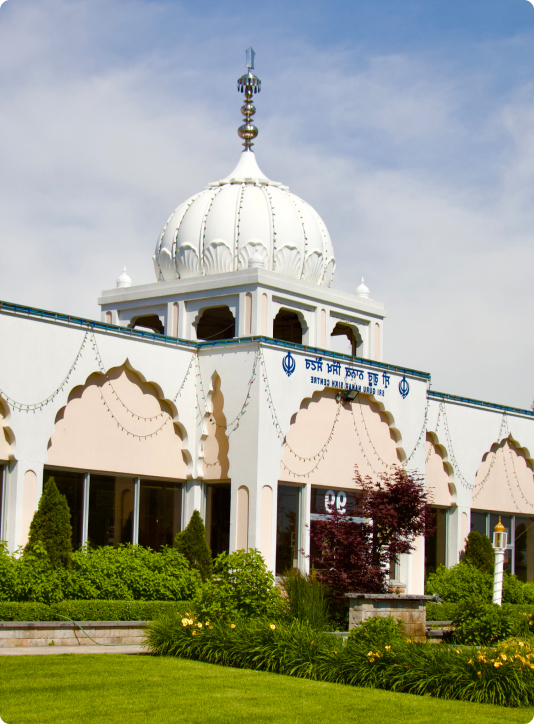Sant Teja Singh Bookstore
Located at Gurdwara Sikh Sangat – 32 Regan Road

About the Bookstore
A Hub for Sikh Literature & Learning
Our bookstore, located within Gurdwara Sikh Sangat (32 Regan Road), serves as a dedicated space for preserving and promoting Sikh heritage. We offer a wide range of books, resources, and items that reflect the richness of Gurmat, Sikh history, and Punjabi culture.
Honouring Sant Teja Singh
In Honour of Sant Teja Singh
This bookstore is named in memory of Sant Teja Singh Ji whose lifelong dedication to Sikhi and seva inspired generations.
Sant Teja Singh Ji: A Visionary Leader and Advocate for Sikhism
Sant Teja Singh Ji, originally Niranjan Singh Mehta, was born on May 14, 1877, in Balowali, Gujranwala district, Punjab (now in Pakistan). He was born into a Mahita Khatri family, with his father, Sardar Rala Singh, serving as a prominent physician, and his mother, Sada Kaur, providing a nurturing foundation. He married Bishan Kaur during his middle school years. While records of his descendants or surviving family members are scarce, Sant Teja Singh Ji’s legacy is etched in history through his profound contributions to spirituality, education, and community activism.
Academic and Spiritual Transformation
Sant Teja Singh Ji was an exceptional scholar. He earned a Master’s degree in English Literature from Panjab University in 1900 and later obtained a law degree from Government College, Lahore. His career began in education, holding roles such as the headmaster of the Anglo-Sanskrit High School in Bhera and vice-principal of Khalsa College, Amritsar. His life took a transformative turn in 1906 when he received initiation from Sant Attar Singh Ji of Mastuana and adopted the name Teja Singh. Following this spiritual awakening, he dedicated his life to spreading Sikhism and advancing education.
He traveled abroad for further studies, attending University College London, Teachers College at Columbia University, and Harvard University, where he earned his A.M. degree in 1911. During his time abroad, he established Sikh associations, preached Sikhism, and delivered lectures in the U.S., Canada, and the U.K., becoming a global advocate for Sikh values.
Sant Teja Singh Ji played a pivotal role in the South Asian community in Canada, particularly in resisting the British Honduras Scheme of 1908. This Canadian government proposal aimed to relocate South Asian immigrants, predominantly Sikhs, from British Columbia to British Honduras (now Belize) due to racial prejudices and economic concerns. White Canadians viewed South Asians as a “racial burden” and believed they could not adapt to the Canadian climate and economy.
Sant Teja Singh Ji, alongside leaders like Sham Singh and Hagar Singh, strongly opposed the scheme. They argued that conditions in British Honduras—characterized by low wages, poor sanitation, lack of fresh water (crucial for Sikh religious practices), and rampant disease—were unsuitable for the Sikh community. The Khalsa Diwan Society’s diary, written by Arjan Singh Brar, documents these resistance efforts, including gatherings at Gurdwaras where over 500 people assembled to strategize and share information.
Sant Teja Singh Ji mobilized financial resources to support unemployed South Asians and counter the narrative of economic marginalization. Initiatives such as raising funds to build a Sikh temple in Vancouver and founding businesses like the Guru Nanak Mining and Trust Company demonstrated the community’s resilience and capability. The eventual failure of the British Honduras Scheme underscored the effectiveness of this resistance and the solidarity within the South Asian community.

Baru Sahib: The Valley of Divine Peace
Sant Teja Singh Ji was instrumental in the establishment of Baru Sahib, also known as the “Valley of Divine Peace,” located in Himachal Pradesh, Punjab. This initiative fulfilled the vision of his mentor, Sant Attar Singh Ji, who dreamed of creating a spiritual center in the Himalayas that blended modern scientific education with spiritual teachings.
In 1956, Sant Teja Singh Ji, along with Bhai Iqbal Singh and Bhai Khem Singh, identified Baru, a secluded area near Nahan in Himachal Pradesh, Punjab, believed to have been sanctified by Guru Gobind Singh Ji. Recognizing its spiritual significance, he acquired approximately 400 acres of land without personally negotiating the price. In 1959, at the age of 82, Sant Teja Singh Ji visited Baru Sahib with a group of devotees. They constructed a modest mud hut where the first Akhand Path (continuous recitation of the Guru Granth Sahib) was conducted. During the Ardas (prayer), Sant Teja Singh Ji prophesied that this site would grow into a center for spiritual and scientific education.
After his passing, the responsibility for developing Baru Sahib was entrusted to Baba Iqbal Singh Ji. Over the years, Baru Sahib evolved into a thriving spiritual and educational center. The Akal Academy, established in 1986 with just five students, now educates thousands. Baru Sahib today also houses an orphanage, an old-age home, a charitable hospital, and a women’s spiritual academy, managed by The Kalgidhar Society, founded by Sant Teja Singh Ji in 1963.
Educational Contributions in Punjab
Returning to Punjab earlier in his life, Sant Teja Singh Ji served as principal of Guru Nanak Khalsa College and Teachers’ College at Banaras Hindu University. He founded the Akal Degree College in Mastuana, emphasizing humanistic studies alongside technical skills, reflecting his vision of holistic education.
In Canada, Sant Teja Singh Ji’s contributions extended to the Khalsa Diwan Society of Victoria, British Columbia, one of the earliest Sikh institutions in North America. Established in 1912, the society provided spiritual, cultural, and social support for the Sikh community. The Gurdwara served as a sanctuary during challenging times, promoting community bonds and fostering resilience.
The Khalsa Diwan Society’s achievements, such as the construction of its Gurdwara in 1912 and its centennial celebration in 2012, embody the spirit of unity and perseverance championed by Sant Teja Singh Ji. The society continues to be a hub for spiritual and cultural activities, preserving Sikh heritage and supporting future generations.
Conclusion
Sant Teja Singh Ji’s life exemplifies dedication to spiritual growth, community empowerment, and resistance against injustice. His leadership during pivotal moments, such as the opposition to the British Honduras Scheme, and his contributions to education and Sikhism, have left an enduring legacy. Through Baru Sahib, the Khalsa Diwan Society, and his educational initiatives, he demonstrated the power of resilience and faith, inspiring generations worldwide.
What You’ll Find
Books, Art, and Sikh Essentials
- Sikh literature (Gurbani, translations, history, children's books)
- Educational materials on Gurmat, Rehat Maryada, and Sikh philosophy
- Beautiful Sikh artwork and framed prints
- Kirpans, gutkas and related items
- Children’s learning resources and beginner materials

“A rare photo of Sant Teja Singh, who is on horseback leading the dedication procession for the Khalsa Diwan temple in Victoria on Oct. 6, 1912. RICHARD POCOCK VIA CITY OF VICTORIA ARCHIVES”

Visit Us
Plan Your Visit
We welcome all visitors — whether you’re looking for a new book, a gift, or simply want to explore Sikh teachings.
Location: Gurdwara Sikh Sangat, 32 Regan Road, Brampton, ON

